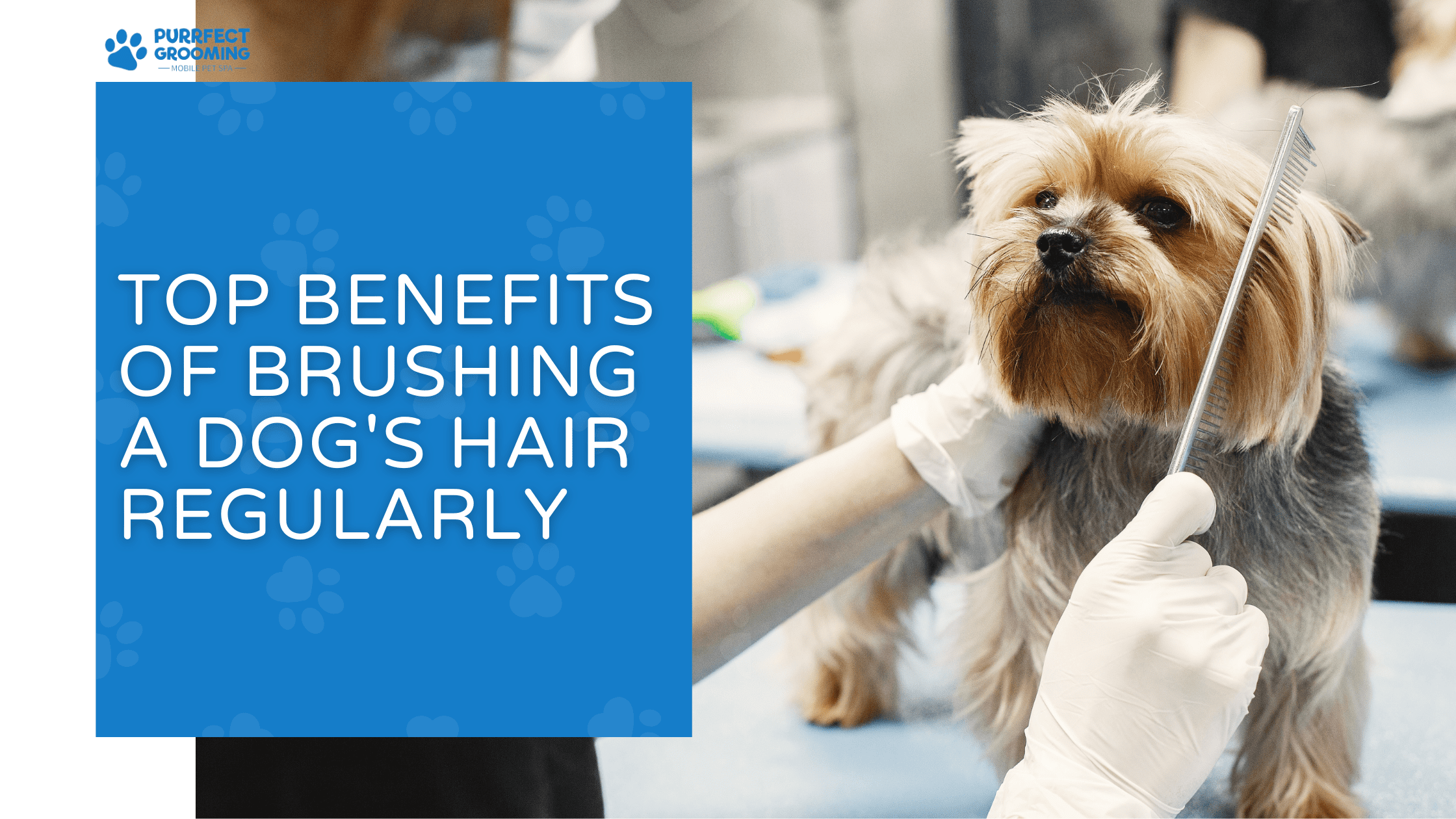Top Benefits of Brushing A Dog’s Hair Regularly
Brushing a dog’s hair is more than just a cosmetic routine—it’s a cornerstone of your pet’s health and happiness. Whether your dog has a sleek, short coat or luscious, flowing locks, regular brushing offers numerous benefits. From keeping their coat shiny to preventing painful mats, the importance of combing a dog’s hair cannot be overstated.
Why Brushing a Dog’s Hair is Essential
Maintaining a Healthy Coat
Brushing removes dirt, debris, and loose hair, allowing your dog’s coat to breathe. It also stimulates the production of natural oils, which keep the coat shiny and healthy.
Preventing Matting and Tangles
Mats can pull on a dog’s skin, causing discomfort and even infections. Long-haired breeds like Golden Retrievers and Shih Tzus are particularly prone to tangles, making regular brushing a must.
Reducing Shedding
Brushing helps control the amount of loose fur in your home. If you’re wondering, “How often should I brush my dog to reduce dog shed?”—the answer depends on their coat type and shedding season.
How Often Should I Brush My Dog?
Determining Frequency by Coat Type
- Short-haired dogs like Boxers need brushing once a week.
- Medium-haired dogs like Border Collies benefit from 2–3 sessions weekly.
- Long-haired dogs like Afghan Hounds require daily grooming.
Seasonal Considerations
During shedding seasons, such as spring and fall, brushing frequency may need to double. Similarly, winter coats demand extra care to prevent matting.
Dog Grooming Tools You Need for Brushing a Dog’s Hair
Different Types of Brushes
- Slicker Brush: Ideal for removing mats and tangles.
- Pin Brush: Great for long, silky coats.
- Bristle Brush: Suitable for short-haired breeds.
Choosing the Right Comb
Metal combs are excellent for detangling, while dematting tools handle stubborn knots.
Step-by-Step Guide to Brushing Your Dog’s Hair
Preparing Your Dog
Start by creating a calm environment. Use treats or soothing words to make your dog comfortable. Check for mats or skin issues before beginning.
Brushing Techniques
Begin at the head and move towards the tail. Use gentle strokes and focus on one section at a time. Avoid pulling too hard on tangled areas.
The Benefits of Combing a Dog Regularly
Bonding with Your Dog
Grooming sessions are a fantastic way to bond with your furry friend. It fosters trust and helps them relax.
Early Detection of Skin Issues
Regular combing allows you to spot fleas, ticks, or skin irritations early, preventing more severe health problems.
Myths About Brushing a Dog’s Hair
Brushing Causes More Shedding
This is a myth! Regular brushing actually reduces shedding by removing loose fur effectively.
Only Long-Haired Dogs Need Brushing
Every dog, regardless of coat type, benefits from brushing. It’s all about using the right tools for their coat.
Brushing and Professional Grooming
When to Seek Professional Help
If your dog has severe mats or needs breed-specific grooming, it’s best to consult a professional groomer.
Complementary Grooming Practices
Pair brushing with regular dog bath and nail trims for a well-rounded grooming routine.
Common Mistakes to Avoid When Brushing a Dog
- Don’t brush too hard or fast—it can hurt your dog.
- Avoid ignoring sensitive areas like the belly and ears.
- Ensure you’re using the right brush for their coat type.
Recommended Brushing Frequency by Breed
| Breed Type | Coat Type | Brushing Frequency |
| Labrador Retriever | Short-haired | 1–2 times per week |
| Golden Retriever | Long-haired | Daily |
| Poodle | Curly-haired | Every 2–3 days |
| Chihuahua | Smooth coat | Once a week |
Common Brushes and Their Uses
| Brush Type | Best For | Purpose |
| Slicker Brush | Long, tangled coats | Removes mats and tangles |
| Pin Brush | Silky, long-haired dogs | Smoothens coat |
| Bristle Brush | Short-haired dogs | Removes loose fur |
Conclusion
Brushing a dog’s hair is an essential part of their grooming routine. It keeps their coat healthy, prevents matting, and even strengthens the bond you share with your pet. Whether you’re combing a dog for relaxation or managing their shedding, regular grooming is key to their overall well-being.
FAQs
1. What’s the best way to comb a dog with mats?
Use a slicker brush or dematting tool, and work gently to avoid pulling on the skin.
2. Can brushing a dog reduce allergies at home?
Yes, it helps remove allergens like dander, reducing allergic reactions in sensitive individuals.
3. How often should I brush my dog during shedding seasons?
Depending on the coat type, increase brushing to daily during shedding seasons.
4. What if my dog hates being brushed?
Start slow, use treats, and ensure the environment is calm. Positive reinforcement works wonders!
